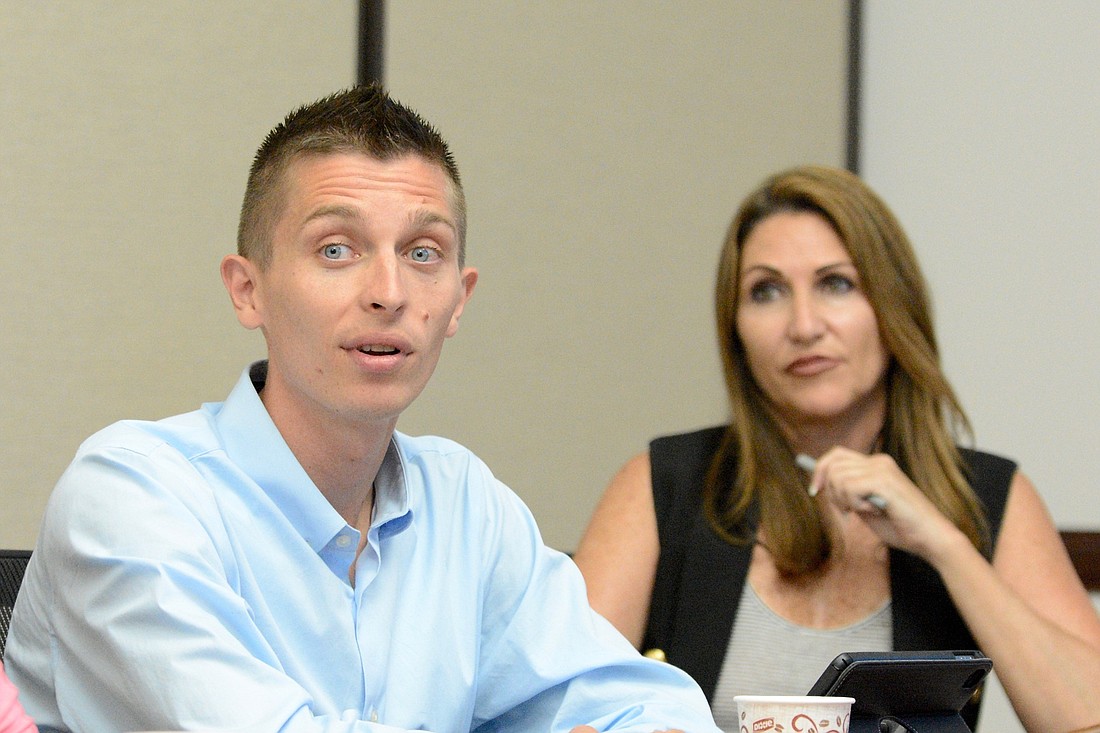- April 18, 2024
-
-
Loading

Loading

Palm Coast's government can hear the message loud and clear: Its residents aren't happy with cell phone reception in the city. People complain about being unable to make phone calls from within their homes and about "dead zones" where calls are suddenly dropped.
Now the city's proposing a solution. It could contract with a management company called Diamond Communications to study the area and map out the dead zones for each major carrier, as well as locations where new towers could be placed. Then Diamond would approach carriers with data about their service gaps, and try to entice them to add new antennas to city towers.
New towers might also be built, possibly formed to look like flagpoles. Or antennae could be placed atop high buildings or church steeples.
The city has the space for towers and additional antennas. But it has struggled to get carriers to place more antennas within the city.
"It's very frustrating when I go by Fire Station 25, and I drop a call, and I can see our tower, and they don’t want to put an antenna up," City Manager Jim Landon said at a City Council meeting April 15.
The growth in cell tower usage and cell antennae placement in Palm Coast stagnated during the city's economic downturn, he said.
"All of a sudden we hit a brick wall with the recession we had, and we had no expansion in Palm Coast," Landon said. And, he said, the industry changed, with fewer carriers willing to build their own towers.
"It became obvious that we needed to change some of our policies, some of our ordinances, and how we do business to try to keep cell service improving here in Palm Coast," he said. Part of Diamond's job, he said, would be to determine best practices for how the city deals with commercial cellular service issues.
Diamond would not be paid unless it brought the city business, and then it would take a percentage of the money exchanged in any contract between a cellular service provider and the city — 35% of new carriers' leases for space on the city's towers, and, if an existing lease is modified, 25% of the new revenue.
If new towers would be built, Diamond would pay Palm Coast $25,000 at start of construction, but then take 60% of the revenue.
City Councilman Steve Nobile asked why a provider would be any more likely to respond to Diamond's appeals than to the city's own.
A Diamond representative said the company would "talk about the renewed focus and the energy that the city’s got on making the coverage better," then confirmed, when asked by Landon, that the company would be able to provide specific data on individual carriers' service gaps.
Mayor Milissa Holland asked Landon if the city has reached out to carriers such as ATT, which doesn't have any antennas on the city-owned and city-leased towers. "What do they say?" she asked.
"'Well, we’ll get back to you,' or we don't get to the right people, the decision makers," Landon said. "But for the most part they don’t want to talk about it."
Nobile said he liked the idea of having a study done, and being strategic about placing future towers and fitting multiple providers on towers.
"I don't want cell service increased by popping up towers everywhere with one provider on each tower," he said. But he was concerned about why providers haven't been using the space the city already has.
"We get in this situation where if there’s a tower there, and no one puts an antenna there, you have to figure out why," he said.
City Councilman Nick Klufas, a software engineer who'd made matters of technology and communications central to his campaign for office, had other concerns: If Diamond wasn't successful at bringing carriers to the table, he said, then, "We also get nothing for the next five years," because the proposed five-year-contrcat with Diamond is exclusive.
City compensation analyst Debbie Streichsbier, the staff member who'd briefed the council on the proposal, had mentioned earlier that one company that had bid for the city contract — Crown Castle International — had pulled out. Klufas asked why. Streichsbier said Crown Castle hadn't given a specific reason.
But Landon said Diamond had a financial incentive to bring carriers to the city. "If Diamond is not successful for bringing carriers to the table, they get zero,"Landon said.
If Diamond can't produce results, Nobile said, "then there's some bigger problem. ... There’s something really wrong."
Klufas suggested that the city could have the study done, then negotiate with carriers on its own. Landon said city staff doesn't have the specialist expertise to do that, and that going back out for another request for proposals would take another four to six months.
"Going back out to bid for a study ... is going to be the most inefficient, typical-government thing we can do," Landon said. "A study right now on this is just gong to take a lot of time, it’s going to take money, and we’re going to end up right back here with Diamond."
Klufas asked if city staff had data on whether an arrangement like the one proposed in the contract has worked out for other cities. Staff didn't have that information, and Klufas said he was uncomfortable voting on the proposal without more background information.
Landon suggested city staff place the proposal on the City Council's agenda for the May 2 meeting with an option to delay the vote, to approve the proposal or to reject the proposal.
Correction: This story has been corrected to accurately reflect the manner in which new revenue from new carrier contracts would be divided between the city and Diamond Communications under the proposed city contract with Diamond.